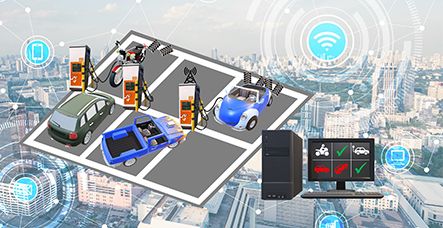![[Translate to English:] Großstadt](/fileadmin/_processed_/c/9/csm_Smart_City_Printed_Sensors_05_ef1b917ebe.jpg)
SMART CITY
Whether predictive maintenance, examining the air quality in critical areas or intelligent traffic monitoring and control - printed organic sensors offer new solutions for the Smart City of tomorrow.
Printed Sensors for Smart City
There is more to the future of urban design than just planning new streets and gigantic building complexes. The development and implementation of new ideas is essential to make the leap into the future of the Smart City. New solutions and technologies are required. Here, our printed organic sensors offer a new foundation that meets both ecological and functional requirements.
Why Printed Sensors Provide the Leading Edge
Our large area printed sensors can be produced both at low-cost and on an industrial scale, offering a high potential for a fundamental support of a strong digital traffic infrastructure. Whether it concerns bridge monitoring or road and traffic control, our flexible, customized pressure, temperature or gas sensors can be integrated almost anywhere and generate a comprehensive and reliable data base. Through the integration into an intelligent IoT system, traffic safety and control can be optimized and environmental pollution minimized.
What Applications in Smart City are Conceivable?
Our sensors are printed on flexible and ultra-thin substrates and can be integrated both on and under roads. Thus, a variety of systems for digital traffic control can be realized,including the integration into IoT systems. Road users such as bicycles, cars, trucks etc. can be distinguished, speed measured and even conclusions regarding weight van be drawn. This provides an exact overview of current road users and thus, enables real-time control.
This leads to another application, namely predictive maintenance. By precisely measuring the number of vehicles that have crossed a bridge, in combination with the information about the weight of the respective vehicles, predictions about reasonable maintenance intervals can be made. Vibration checks for early detection of bridge damages are also crucial.

In public transport, sensors embedded in seats or in the floor could precisely and in real time analyze the capacity on buses and trains currently on the roads, thereby identifying potential for optimization. This could support travelers trying to find available seats on public transportation prior to their journey. Particularly in the current situation, this enables to check whether the vehicle is overloaded and the required distance can, thus, not be guaranteed even before using public transport .

In addition, our sensors can support intelligent parking and help to manage parking space utilization more efficiently in crowded city centers - also in connection with charging stations for electric vehicles. Unlike many other systems, this also works without a canopy, which is necessary for many conventional occupation detectors because they have to be installed there.
Finally, our portfolio includes gas and humidity sensors which can be used for air quality monitoring and as warning systems. Humidity and moisture sensors at bridges, buildings, roads, or pipelines can specifically detect and report damages.
